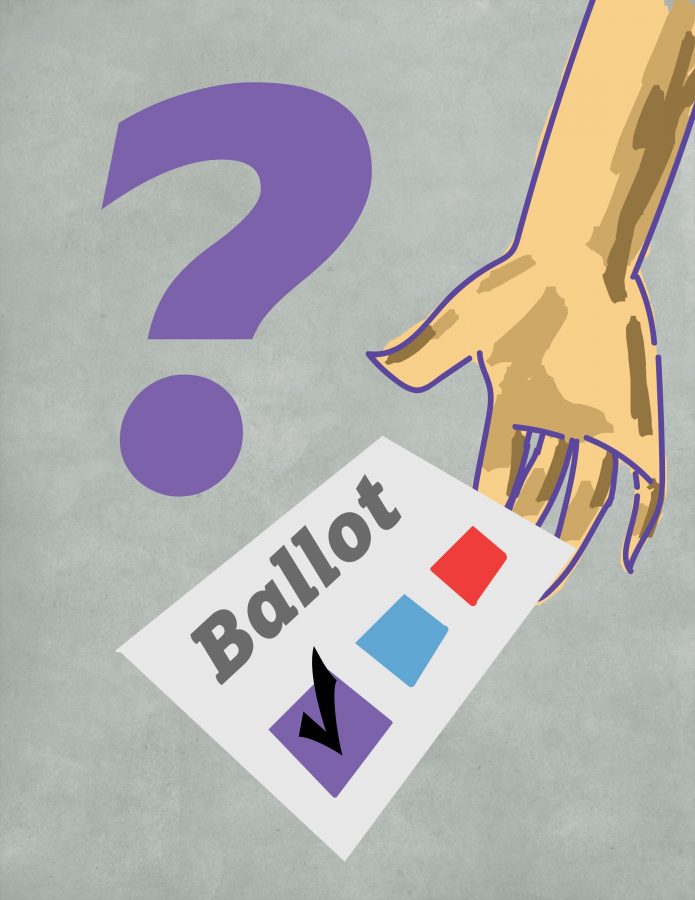Choosing neither of the above: Millions of voters turn to third-party candidates in heated election
November 19, 2016
In the 1968 election, George C. Wallace, an American Independent, won five Southern states with his platform of racial segregation. No third-party candidate since has won a state in the presidential election. The two-party system defines the U.S.’s modern democratic fabric.
“Third parties have been around for a hundred, two hundred years; very rarely do they get anywhere,” Gary Jacobson, Professor Emeritus of Political Science at UC San Diego, said.
“The last time a third party became a second party was in the 1850s, when the Republicans replaced the Whigs. Donald Trump has shown why, and that is if you want to mount an insurgency, it’s easier to take over an existing party than it is to start one on your own.”
Third parties gain support by advocating for a platform combining different Democratic and Republican viewpoints or by focusing on issues that the two main parties often neglect.
Polling collectively at approximately 11 percent at their peak and currently at six percent in 2016 according to New York Times’s aggregate polling data, third party politicians can garner enough support to affect the outcome in swing states by drawing voters away from the main two parties. In the 2012 election, the differences between candidates Barack Obama and Mitt Romney were often within one percent and at most 4.2 percent.
“With Hillary, so many people feel like they know her and if they don’t like her, they already know that, they feel strongly about that,” Surya Yalamanchili, former contestant on The Apprentice and 2010 congressional candidate, said. “With Trump, it feels like every week, there’s another story or he’s saying something that gives a lot of people more ammunition to dislike him, and as a result of that third party candidates like Jill Stein are getting picked up [and] they’re getting a lot of support.”
Gary Johnson, nominee of the Libertarian Party, and Jill Stein, nominee of the Green Party, both competed in the 2012 presidential election. With less than 1.5 percent of the popular vote combined, their influence on the election result was negligible, but due to the increasing disapproval of the two main parties’ presidential candidates, Hillary Clinton and Donald Trump, more people seriously considered third parties at the polls.
In the 2016 election, Johnson garnered 3% of the popular vote and Stein 1%. In the contentious state of Pennsylvania, with its 20 electoral votes, Johnson earned 2% of the popular vote and Stein 0.9%, according to the Associated Press. Trump won Pennsylvania by a narrow margin of approximately 70 thousand votes, a smaller share of votes than the third party candidates earned.
Similarly, in Florida, which was also a closely-fought swing state, Johnson won 2% of the popular vote and Stein 0.7%, according to the Associated Press. The state’s 28 electoral votes went to Trump, who won 49% of the vote compared to Clinton’s 48%.
Johnson, former governor of New Mexico, advocates for the legalization of marijuana and is fiscally conservative and socially liberal. Peaking at a popularity of 9.8 percent in June, he lost support while gaining media coverage after asking “What is Aleppo?” in an MSNBC interview.
Stein advocates for the elimination of pesticides and genetically modified organisms in agriculture and shares many of the liberal views of the Democratic Party.
This piece was originally published in the pages of The Winged Post on November 16, 2016.


















![“[Building nerf blasters] became this outlet of creativity for me that hasn't been matched by anything else. The process [of] making a build complete to your desire is such a painstakingly difficult process, but I've had to learn from [the skills needed from] soldering to proper painting. There's so many different options for everything, if you think about it, it exists. The best part is [that] if it doesn't exist, you can build it yourself," Ishaan Parate said.](https://harkeraquila.com/wp-content/uploads/2022/08/DSC_8149-900x604.jpg)




![“When I came into high school, I was ready to be a follower. But DECA was a game changer for me. It helped me overcome my fear of public speaking, and it's played such a major role in who I've become today. To be able to successfully lead a chapter of 150 students, an officer team and be one of the upperclassmen I once really admired is something I'm [really] proud of,” Anvitha Tummala ('21) said.](https://harkeraquila.com/wp-content/uploads/2021/07/Screen-Shot-2021-07-25-at-9.50.05-AM-900x594.png)







![“I think getting up in the morning and having a sense of purpose [is exciting]. I think without a certain amount of drive, life is kind of obsolete and mundane, and I think having that every single day is what makes each day unique and kind of makes life exciting,” Neymika Jain (12) said.](https://harkeraquila.com/wp-content/uploads/2017/06/Screen-Shot-2017-06-03-at-4.54.16-PM.png)








![“My slogan is ‘slow feet, don’t eat, and I’m hungry.’ You need to run fast to get where you are–you aren't going to get those championships if you aren't fast,” Angel Cervantes (12) said. “I want to do well in school on my tests and in track and win championships for my team. I live by that, [and] I can do that anywhere: in the classroom or on the field.”](https://harkeraquila.com/wp-content/uploads/2018/06/DSC5146-900x601.jpg)
![“[Volleyball has] taught me how to fall correctly, and another thing it taught is that you don’t have to be the best at something to be good at it. If you just hit the ball in a smart way, then it still scores points and you’re good at it. You could be a background player and still make a much bigger impact on the team than you would think,” Anya Gert (’20) said.](https://harkeraquila.com/wp-content/uploads/2020/06/AnnaGert_JinTuan_HoHPhotoEdited-600x900.jpeg)

![“I'm not nearly there yet, but [my confidence has] definitely been getting better since I was pretty shy and timid coming into Harker my freshman year. I know that there's a lot of people that are really confident in what they do, and I really admire them. Everyone's so driven and that has really pushed me to kind of try to find my own place in high school and be more confident,” Alyssa Huang (’20) said.](https://harkeraquila.com/wp-content/uploads/2020/06/AlyssaHuang_EmilyChen_HoHPhoto-900x749.jpeg)







